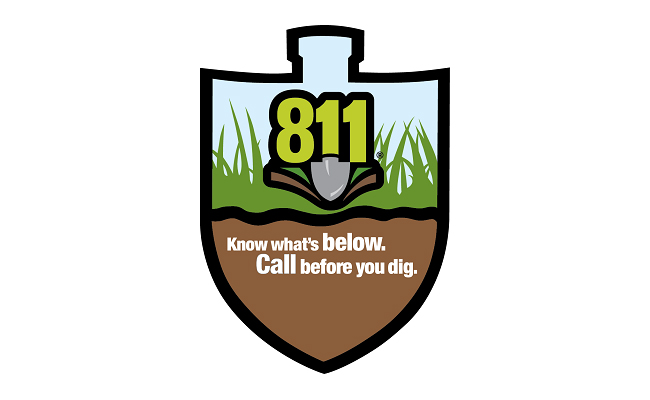Locating Guidelines

Successfully locating and identifying buried utilities is a process of elimination—elimination of mistakes. A thorough understanding of the jobsite and the equipment’s correct operating procedures can help you save a great deal of time and money. No matter what locating equipment you are using, these guidelines will help drilling or excavating crews understand precisely where they can operate safely.
Know Where You Stand.
Jobsite awareness is critical. You should gain as much knowledge about the location of the facilities before pulling out your pipe and cable locator. There are three essential steps:
- Call 811. “Smart digging always requires a call to 811,” says the 811 website. [www.call811.com/] This cannot be overemphasized. Calling 811 is important whether you are planting a tree in your backyard or installing new utilities. Calls to 811 are routed to your local One Call Center, where an operator will ask details about your project. With this information, the operator will notify the local utility companies that will be affected. Within a few days, the companies will send a professional locator to mark the approximate location of your underground lines, pipes and cables. Some important things to remember about calling 811:
- Call a minimum of 48 hours before you plan to dig. Some states require 72 hours’ notice.
- Only call if you intend to dig. You should not call 811 simply to acquire a map of the utilities in your area.
- Utilities and their contracted locators mark their facilities for free, so take advantage of the 811 service. It can help you avoid utility damage, power outages, fines, and worse. For more information, visit the 811 website.
- Make use of available facility records. Facility records indicate approximate location, number of facilities, and access points for buried facilities within the jobsite area. Records are usually available from the facility owner.
- Visually inspect the jobsite. Visual inspection is necessary to determine if there are facilities not on record. Evidence of a facility includes poles, dips enclosures, pedestals, valves, meters, risers, and manholes. If there are any questions regarding the locate, contact the utility locator.
Know The Process.
Pipe and cable locators locate the electromagnetic (EM) field produced by the AC current flowing on the line, not the pipe or cable itself. Many non-metallic pipes and cables have tracer wires buried next to them that can conduct electricity.
EM pipe- and cable-locator equipment systems consist of a transmitter and a receiver that are portable and, when properly used, very accurate. After identifying the best access point to the target line, the operator can place a signal on the line either by direct connection, clamp induction, or broadcast induction. The most accurate method is direct connection, which involves the signal traveling from the transmitter, through the target line, and returning through the ground stake. Only operators qualified to work with electricity should connect to an electric line. Here are some recommended procedures for direct connection:
- Setup
- Remove common grounds and connections to other utility lines to prevent the signal from being placed on untargeted lines.
- Insert the ground stake to the left or right of the target line’s suspected path. The transmitter’s black ground wire should not cross other lines.
- Connect the black transmitter wire to the stake and the red transmitter wire to the target line. Remove any paint, dirt or corrosion from the target line.
- Power and Frequency Selection
- On the transmitter, select the appropriate settings to match the conditions of the locate. Use the minimum power level and the lowest frequency required to locate the target line. Remember: the higher the frequency, the easier to couple to adjacent lines, and the shorter distance the signal travels.
- Sweep
- Set the receiver frequency to match the transmitter frequency. Conduct a 360-degree sweep around the access point where the transmitter is connected to the target line. This helps locate the direction of the target line.
- Tracing the Target Line
- The target line can be identified by finding the location with the strongest signal response. Sweep the receiver perpendicular to the target line and walk along its path. Retrace the path and mark with the proper color paint or flags.
Know Your Limits.
The receiver/transmitter system is accurate when used properly, but the only way to verify the exact depth and location of a target line is to expose it. First, select the critical areas along the marked path of the target line, and then excavate to the target line. Exposing target lines can be safely accomplished using a Ditch Witch vacuum excavator (hydro or air) system.
These locating procedures are general guidelines and are not intended to be a comprehensive guide to operating your electronic locating system. Your operator’s manual contains complete recommendations and instructions for correct operation and maintenance.
Subsite® Electronics is committed to providing underground construction professionals the most comprehensive suite of electronic products in the industry, including utility locators, Horizontal Directional Drilling (HDD) guidance equipment, equipment machine controls, and closed-circuit television remote inspection and monitoring cameras and accessories. By utilizing innovative technologies, extensive market feedback and outstanding customer support, Subsite has established itself as the premier source of electronic technology to support the installation, maintenance and inspection of underground pipe and cable. For more information, visit subsite.com.
